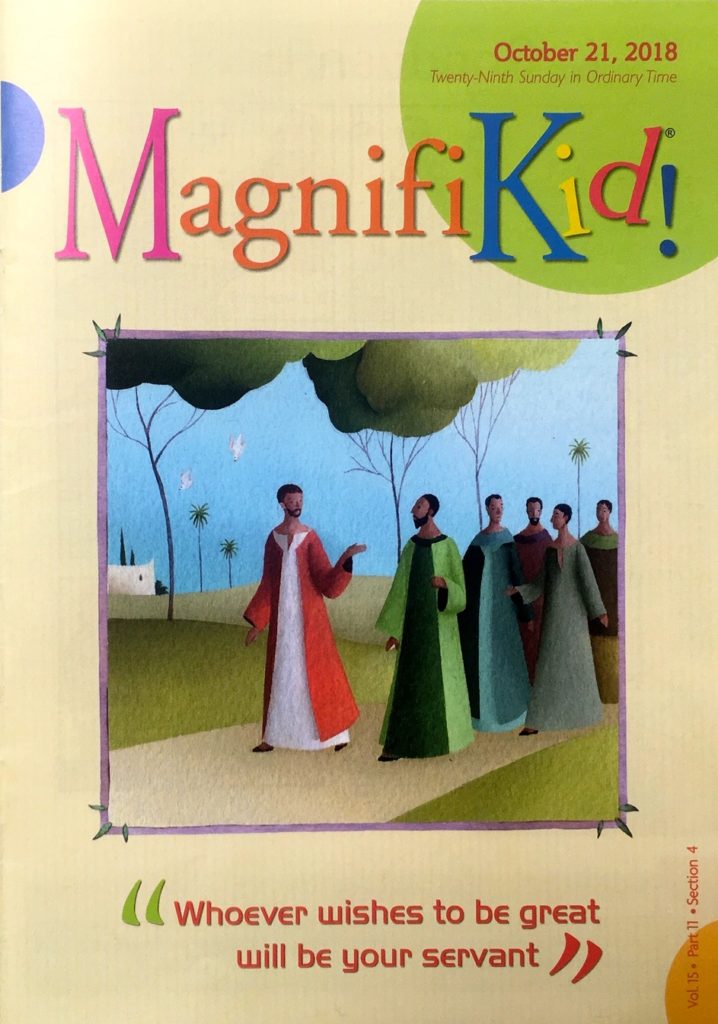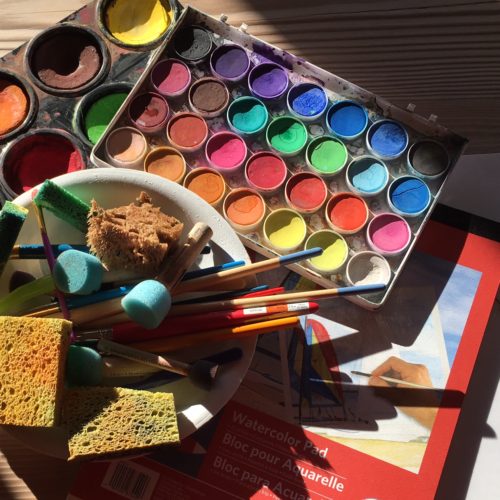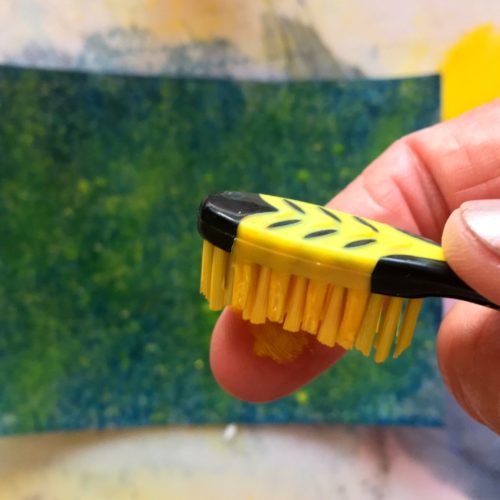“Blessed art thou amongst women, and blessed is the fruit of thy womb.” (Luke 1:42)
“And whence is this to me that the Mother of my Lord should come to me?” (Luke 1:42)
Source: Jesus of Nazareth The Story of His Life Written for Children

For Parents to Teach to Their Children
The lesson this week is on the second of the “Joyful Mysteries” “The Visitation,” where Mary walks many miles to visit her cousin Elizabeth to share her wonderful news. The Mysteries of the Rosary are our template for learning about the life of Jesus. Click to learn how to pray the Rosary by Catholic-Kids.com .
The Joyful Mysteries begin with The Annunciation and are “Said on Mondays and Saturdays, the Sundays of Advent,
and Sundays from Epiphany until Lent.”
“The Joyful Mysteries”
- “The Annunciation
Mary learns that she has been chosen to be the mother of Jesus. - The Visitation
Mary visits Elizabeth, who tells her that she will always be remembered. - The Nativity
Jesus is born in a stable in Bethlehem. - The Presentation
Mary and Joseph take the infant Jesus to the Temple to present him to God. - The Finding of Jesus in the Temple
Jesus is found in the Temple discussing his faith with the teachers.”
Source: LoyolaPress.com “Mysteries of the Rosary”
An Excerpt for Children On The Visitation
“Mary’s Song”
“God often tells His secrets to His friends.He bade Gabriel tell Mary of the happiness his good news had brought to Zachary and Elizabeth, and now He Himself tells Elizabeth of the dignity that had come to Mary. The two were cousins, and Mary thought it would be kind to go to Ain-Karim to visit relatives and make herself useful in the house.”
“We are not told whether she went alone, but it is most unlikely. If Joseph did not go with her, she probably joined some of her relatives who were on their to the Holy City. At last she came upon the rising ground of Judea, and climbing the rugged side of a mountain, found herself at the door of Zachary’s home.”
“Elizabeth was standing on the threshold as if expecting someone. Mary hastened towards her, and saluted her with loving words. But what was her surprise when the aged woman sank to her knees and cried out: ‘Blessed art thou amongst women, and blessed is the fruit of thy womb. And whence is this to me that the Mother of my Lord should come to me.'”
“Her secret, then, was known. God, Himself, must have told Elizabeth. Mary’s heart was full–full to overflowing. She could not keep back it’s burst of joy and praise:”
Source: Jesus of Nazareth The Story of HIS Life Written For Children Pages 45-46
Mary’s Prayer, “The Magnificat”
“My soul magnifies the Lord
And my spirit rejoices in God my Savior;
Because He has regarded the lowliness of His handmaid;
For behold, henceforth all generations shall call me blessed;
Because He who is mighty has done great things for me,
and holy is His name;
And His mercy is from generation to generation
on those who fear Him.
He has shown might with His arm,
He has scattered the proud in the conceit of their heart.
He has put down the mighty from their thrones,
and has exalted the lowly.
He has filled the hungry with good things,
and the rich He has sent away empty.
He has given help to Israel, his servant, mindful of His mercy
Even as he spoke to our fathers, to Abraham and to his posterity forever.”
Source: OurCatholicPrayers.com
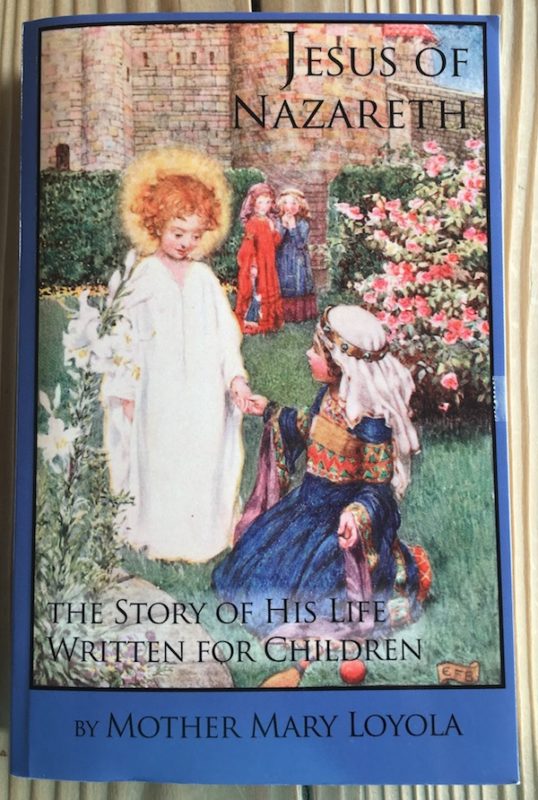
The Lourdes Hymn– Lyrics and Video
Lourdes Hymn
“Immaculate Mary, thy praises we sing;
Who reignest in splendor with Jesus our King.
Ave, ave, ave, Maria! Ave, ave, Maria!
In heaven, the blessed thy glory proclaim;
On earth we, thy children, invoke thy fair name.
Ave, ave, ave, Maria! Ave, ave, Maria!
We pray for our Mother, the Church upon earth,
And bless, dearest Lady, the land of our birth.
Ave, ave, ave, Maria! Ave, ave, Maria!”
Source: CatholicJules.net
Our Prayers
Praying the Rosary

Please read the Apostles’ Creed out loud with your children. Read it slowly, line for line, explaining the meaning and significance of the lines to your children. It explains what we believe in as Catholics. If possible, read this daily to help your children memorize the prayer.
“The Apostles’ Creed” is a profession of our faith and is a prayer. It states the basic beliefs of the Catholic Church. 
Prayers To Mary

“Prayer Taught To The Children of Fatima By the Blessed Virgin”
“O my Jesus, forgive us our sins,
save us from the fires of hell,
and lead all souls to heaven,
especially those in most need of your mercy.”
Source: A Missal for Children “In the Evening” Page 87

What is a Martyr? For Grown-Ups and Older Children
“Martyrdom is the endurance of bodily death in witness to the Christian religion.”
“The sacred name of martyr belongs only to one who renders testimony to divine truth.”
“Blessed Damien of Molokai is a hero (of charity), but not a martyr. St. Pio of Pietrelcina suffered enormously for over 50 years with the stigmata, but is not a martyr. In the Missal, a saint who is a martyr is always named such. M is placed next to his or her name for martyr.
We count as an exception the Holy Innocents, whom the Church, although they lack the usual element of acceptance of death, nevertheless honors as martyrs in the liturgy because they died in the place of the Infant Christ and received baptism of blood.”
“The Blessed Virgin Mary, since she surpassed the martyrs in her sorrows, is called “Queen of Martyrs,” but strictly speaking she was not a martyr, since she did not die from her sorrows.”
Source: CatholicCulture.org
Excerpt for Children from The Catholic Bible for Children
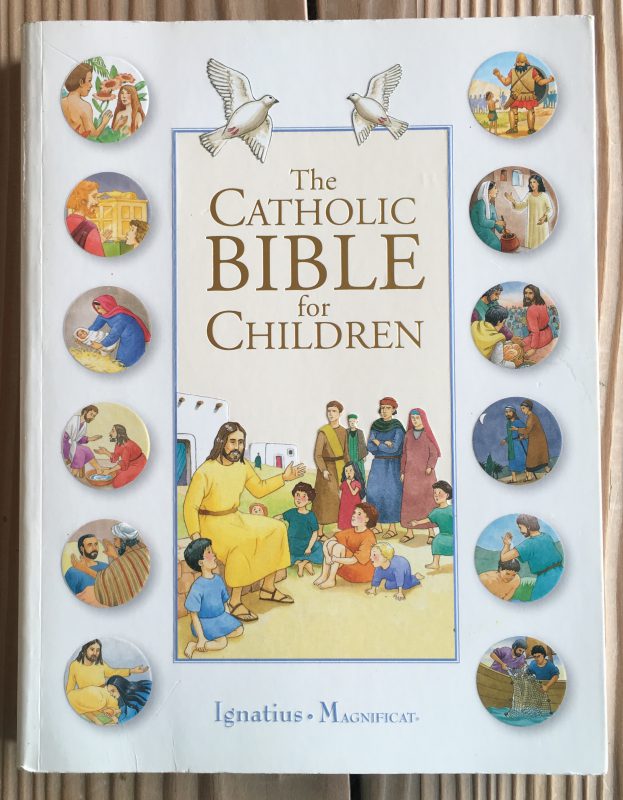
“The Miracle of the Lame Beggar and the Stoning of Stephen” “Acts 3:1-10; 5:12-16; 7:54-60:8:1” Page 214 and 238
“Stephen was a friend of Jesus who helped others and took care of the poor. When he spoke, everyone stopped to listen to him. But when he could see Jesus, whom they had killed, standing next to God in heaven, the scribes and elders were enraged and stoned him. As Stephen died, he prayed, “Lord, do not hold this sin against them.”
“Stephen” Footnotes for Parents pp 2:15-16
“Stephen was a Jew of Greek origin living in Jerusalem. He converted to Christianity and became one of the first deacons. He assisted the apostles in serving the community. He proclaimed his faith loudly and strongly and told the elders and the priests in the Council that he could se Jesus, whom they had killed, standing at God’s sign in heaven. This caused such an outrage that they stoned him to death. He was the first Christian martyr.”
Writing Project
“The Visitation”
“Mary visits Elizabeth, who tells her that she will always be remembered.”
Source: LoyolaPress.com “Mysteries of the Rosary”
This week, try an acrostic poem with your children. Write the word, “VISITATION” or “VISIT” (for younger kids) vertically down the paper. Then, write a word, phrase, or sentence starting with the first letter, on down. Use names, places, and related words from the Bible.
For example for older kids:
VISITATION
V-irtuous
I-nspiration
S-arah
I-ntentions
T-emple
A-braham
T-rust
I-saiah
O-fferings
N-eighbor
An Example for Younger Children:
VISIT
V-irtue
I-saac
S-arah
I-ncense
T-rust
Teaching Your Child About Virtues–“The Three Theological Virtues”
“Virtues are special graces given by God to the soul for the accomplishment of particular objectives.”
Source: Catholic.com

Faith
“Faith is the theological virtue by which we believe in God and believe all that he has said and revealed to us, and that Holy Church proposes for our belief, because he is truth itself. By faith “man freely commits his entire self to God.” For this reason the believer seeks to know and do God’s will. “The righteous shall live by faith.” Living faith “work[s] through charity.”
Symbol: The Cross
Hope
“Hope is the theological virtue by which we desire the kingdom of heaven and eternal life as our happiness, placing our trust in Christ’s promises and relying not on our own strength, but on the help of the grace of the Holy Spirit.”
Symbol: The Anchor
Charity
“Charity is the theological virtue by which we love God above all things for his own sake, and our neighbor as ourselves for the love of God.”
Symbol: The Heart
From: “Divine Mysteries: The Three Theological Virtues: Faith, Hope, and Charity”
Art Projects–Gifts for Mary

A Pink Camellia
This painting uses watercolor and a water soluble pastel crayon. I like to make marks, swirls, lines, etc. with a white water soluble pastel, painted over with watercolor. It adds depth to the painting. This art project uses regular dry cake-type watercolors. I splatter the painting when it is dry, using a tooth brush rubbed on wet a watercolor cake. In the photo below, you can see how I use my finger on the bristle to create splatter. It also adds depth and texture to a watercolor painting, and it’s fun! I have used the colors of the landscape of Israel, where Mary lived most of her life, in the arches of the painting–the sea, sky, grasses, dry hillsides and the hot sun.


Our Materials
Suggested Homework Activities–Week Six
Stephen is the first martyr in the Bible. Please read about “The Stoning of Stephen” in a Catholic Children’s Bible, your family Bible, or read it on USCCB.org. “Acts” chapter 7:51-60
“Praying for your beloved parents” from MagnifiKid! October 21, 2018, Vol. 15. Part II, Section 4. Page 5
“The Fourth Commandment states. ‘Honor your father and your mother: Be sure to thank God each day for the family he has given you: your parents, grandparents, brothers, sisters, uncles, aunts… You can bring them and all their concerns to God by saying a prayer for them.'”
Family Discussion: How can we serve others?
“Greatness in God’s Kingdom is not achieved by strength, but through loving service. Jesus invites all of his disciples, including us, to follow his example of humility, to live their lives for others.”
“Serving others”
“Ask your parents to help you find out how you can use your free time to serve others, by helping at your school, at the library, or in your parish.”
MagnifiKid!, Page 3
